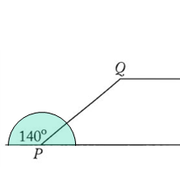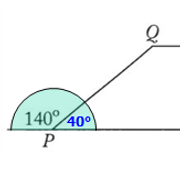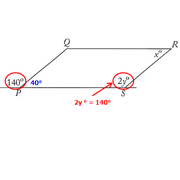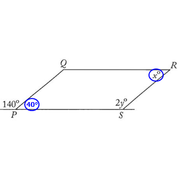lionsshare wrote:
In the figure above, if PQRS is a parallelogram, then y - x =
(A) 30
(B) 35
(C) 40
(D) 70
(E) 100
OA:
A
To solve, we need to review some rules about parallelograms.
In parallelograms, there are two main rules about the relationships between the angles:
1) Opposite angles are equal
Thus, angle P = angle R and angle Q = angle S.
2) Consecutive angles are supplementary. That is, they add to 180 degrees.
Thus, angles Q and P add up to 180 degrees, as do angles P and S, angles S and R, and angles R and Q.
These rules can be used to solve the problem at hand.
We start by determining the value for angle P. We see that angle P is part of a straight angle. Since the exterior angle of angle P = 140 degrees, angle P must equal 40 degrees (since the two angles must sum to 180 degrees).
Using our first rule of parallelograms, we see that angle R, which is equal to x, must also measure 40 degrees, since angles P and R are opposite angles.
Using our second rule of parallelograms, we know that angles R and S must add up to 180 degrees because they are consecutive angles. We note that angle S is equal to 2y. Thus:
2y + x = 180
2y + 40 = 180
2y = 140
y = 70
Therefore, the value of y - x is 70 - 40 = 30.
Answer:
A




